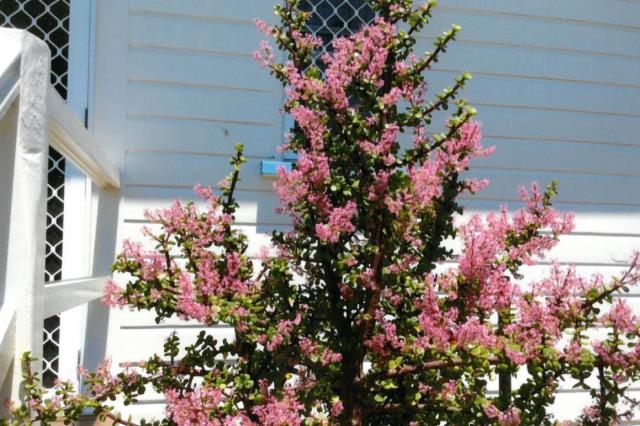By Beatrice Hawkins
I had a lovely surprise when I called at the Free Times office during the week. One of our readers had dropped by with a great photo of their Chinese Jade plant in full flower. Beautiful! I didn’t know that they flowered let alone that they looked as beautiful as the one in the accompanying photo.
They are also known as the friendship tree, lucky plant and money tree.
They are native to the rocky hillsides and arid country of areas of South Africa, Natal and Mozambique.
Another point I didn’t know is that they are very poisonous to dogs, cats and horses and if your pet eats the leaves you would need to get the to a vet very quickly.
However in Africa it is used to treat a wide range of ailments from epilepsy to diarrhoea and corns and in China, a variety of the same plant known as stone lotus, is used to treat diabetic symptoms!
It is said to give off nourishing and positive energy and is the traditional plant to give as a gift to a new business!
They do like good drainage and four or more hours of sunlight each day.
Flowering is triggered by cool nights, bright sunny days and lack of water – just the conditions we’ve had lately, but, even given these ideal conditions, if the plant is not old it will not bloom. I could not find a definitive age but it appears as though it needs to be at least 10 to maybe 20 years old before it will produce flowers even in its native area. Given these criteria, they very rarely flower as a pot plant for obvious reasons.
I know it as an extremely hardy plant growing in gardens and pots Australia wide and had no idea they flowered. Apparently they can have either pink or white tiny starry flowers.
I have seen them growing to their full height and in great profusion as hedges in Lightning Ridge, in gardens in western NSW and outback areas of Qld, carefully tended as house plants in the cold, highland areas of the country and also in gardens in the sandy areas of Western Australia. They are almost as widely grown and hardy as the peppercorn trees and white cedars that were favourites of early settlers all over Australia.
I have never owned one but am now inspired to at least have one in a pot but – I may not live long enough to see it in bloom!
With the harsh conditions we have been experiencing over the last while maybe we need to start thinking seriously about what we plant and go back to some of the things that our forebears used and that have survived with little attention and water. Natives, jade plants, geraniums, all those hardy old fashioned things that survive. I love all the English type things – all our annuals that brighten gardens each spring and through the seasons – but they do require more water and care than we currently have.
At present driving around town I have been noticing things that are doing well. The jacarandas and silky oak trees in full bloom have looked spectacular. I realise that some areas consider jacarandas as a weed but I have always loved them, wished I had the room and climate to grow them and love the carpet of purple when the flowers fall. In all of the many areas in which I’ve lived these things have never combined. When I’ve had the room to grow a tree of this size the climate has not been right, etc. I am entranced each year as they flower and have wonderful memories of them growing on the coast where I grew up. My mother persevered and had one growing and a few years ago when I visited the area it was now a really big tree and flourishing!.. She would have been very pleased with the result. I have friends who are, in my mind, lucky enough to have one, but complain bitterly about the “messy” flowers and leaves – I’d love to have that complaint!!
Mind you, these same people don’t like frangipani and liquid amber trees for the same reason – they drop leaves and flowers! Guess what? They are some of my other favourites and I do have two frangipani flourishing in pots in protected areas here in town and being kept alive with small doses of grey water.
The beautiful cream standard roses in Leslie Park have looked wonderful and are a credit to the gardeners involved as are the beds of petunias brightening the area. Green space is so necessary to our mental health and I am pleased to see Leslie Park being kept as such in the centre of our city. No farmer needs to be told that brown areas are depressing and green gives an instant up lift to the spirits.
Bougainvillea are another very hardy climber that is thriving in these dry times, particularly the old fashioned varieties. Some of the newer hybrids are not faring as well. These prickly climbers can, with care and perseverance, be trained as beautiful standards and reach the proportions of small trees, providing great shade and colour in a small garden.
Finally to all members of the Horticultural Society:
Don’t forget your invitation to our year end function on Wednesday 27th November from 6.00pm at the Warwick Hotel in Palmerin Street.
Come along and enjoy the company of other enthusiastic gardeners and have some fun and look forward to rain soon!
*This is an old article that has been digitised so our readers have access to our full catalogue.







